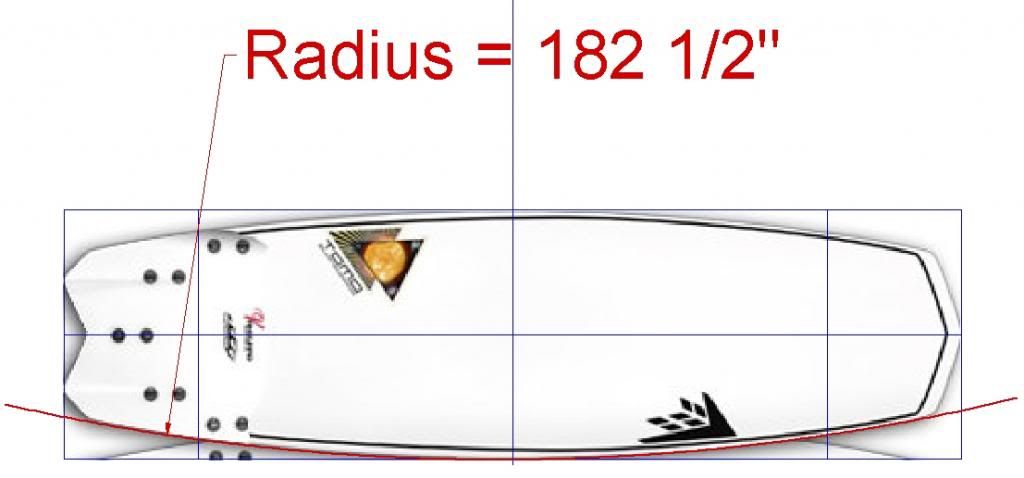Oh no! from here it looks like my pictures are gone?!?!
hello again everysurfer
The only numbers are the measurements and ratios. no maths. No ratios in the above example, meaning ratio's like the boards thickness being a quarter of the width to certerline and the rail line being a quarter of the thickness … (a quarter) is just a concept to vary, you might know that you want it a bit thicker … or the rail line a bit higher or lower.
So frustrating for me. that it's difficult to understand! There are so many little steps involved, if I showed them all, it would become really, really boring. I don't know yet how to make it clearer, maybe a more detailed blog?
Coincidence that they match! … Hmmmmm, If it's all relative the options are limited, then it's just a matter of trying them all. Bill has been around a long time, and is very experienced with that type of shape, so the fact that the rocker he suggests works, isn't a coincidence.
If you wanted some tail kick, should you then alter the template to match the rocker?
Um! arr! hmmmm! I would alter the rocker with planshape characteristics in mind. You will know how much, it's a feeling thing, I believe your brain can see the relationships between planshape and rocker, after all, you are staring right at them.
Fins, swallow tails wings Bonzers. OMG! I'm researching as much as I can and finding relationships and checking their viability. Mini Simmons and fishes are classic principals of "Surfboard Geometry". Yesterday while trying to find your planshape geometry, I found the "Mini Simmons" planshape geometry. (An arc from a circle that uses the length of the board as a radius, put through a cylinder from a quarter to halfway). It looks right, I have to check it.
I wrote a bit on fins (pictures and text) in the "geometry in surfboards" thread. It's at the end of the thread. It's worth checking it out. Since then I have worked out how to make fins by the "surfboard geometry" method and they are created from the boards design, so they are related.
In the geometry thread I tell of a conversation with Geof McCoy (in 1993) he made me a board.
"Einstein," he says, "Do you know what the fastest shape is?"
I'm thinking, I have no answers. ???
he says … "Flying saucer" and he walks off.
Circles, cylinders, ellipses = flying saucer and = "smooth rounded pin".






